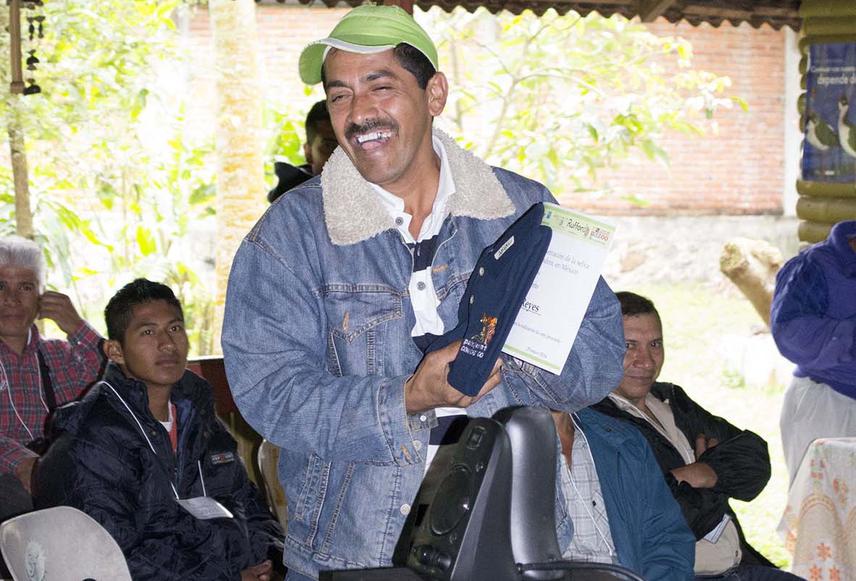Marinés de la Peña-Domene
Other projects
19 Sep 2013
Integrating Rainforest Conservation to the Agricultural Landscape in Los Tuxtlas, Mexico
We aim to overcome regeneration barriers and re-establishing landscape connectivity by planting tree species with early fruits production that attract animal dispersers into pastures.
Deforestation of tropical forests threatens animal and plant species as critical habitats disappear. In heavily-grazed landscapes, regeneration is inhibited by limited seed arrival and failure of seedlings to establish. Connectivity between stands of trees and local animal populations is often lost, threatening many animal and plant species that succumb constrained species-area effects on isolated populations.

A vast majority of tropical rain forest plants are dispersed by animals, yet the majority of animals avoid crossing open pastures. Until seed-carrying animals are attracted into the pastures, few forest seeds reach them, severely reducing regeneration potential. For this ecological restoration experiment we choose species that bear fleshy fruit in early stages of ecological succession. Once fruits are available, animal dispersers will be attracted and carry seeds from the forest into and out of the pasture, thereby promoting connectivity of recruitment and ultimately pollination among forest fragments. Plantings provide the dual roles of improve micro-environmental conditions for woody vegetation and attract vertebrate dispersal agents carrying seeds from forest; these two factors together accelerate forest regeneration by promoting the establishment of woody forest species in otherwise barren pastures.
This project will test how regeneration is accelerated through manipulation of self-sustaining dispersal processes. Moreover, the species that we use have different seed sizes that will be attractive to different fruit-eating animals. We expect that these different assemblages will bring different sets of forest seeds to create distinctive forest regeneration patterns.
Our aim is to assess whether attracting animal seed-dispersers into pastures re-establishes dispersal processes that accelerate habitat restoration and enhance landscape connectivity in a highly fragmented biodiversity hotspot. These cost-efficient plantings were designed to be used widely throughout the Neotropics; landowners can benefit from the planted edible species as food for humans or livestock but also from curbing erosion with planted stands of fruiting trees. These low-cost simple plantations that restore self-sustaining regeneration processes can be used to create barriers for soil retention, which is now a great risk for many population in tropical regions. Plantings of fruiting trees offer a two way gain as a means of conserving biodiversity and as direct benefits for landowners.